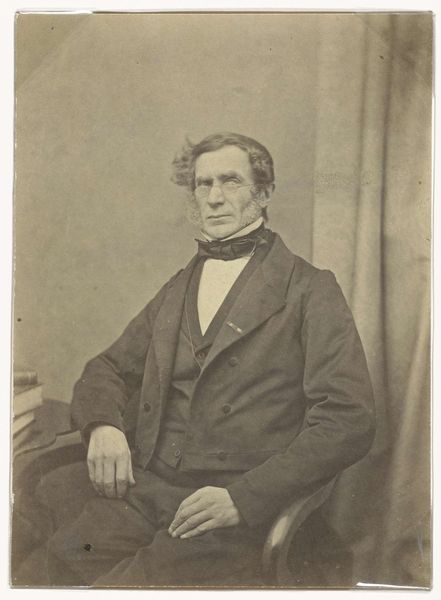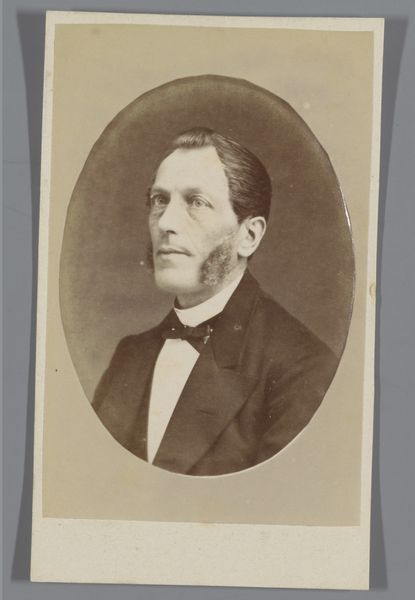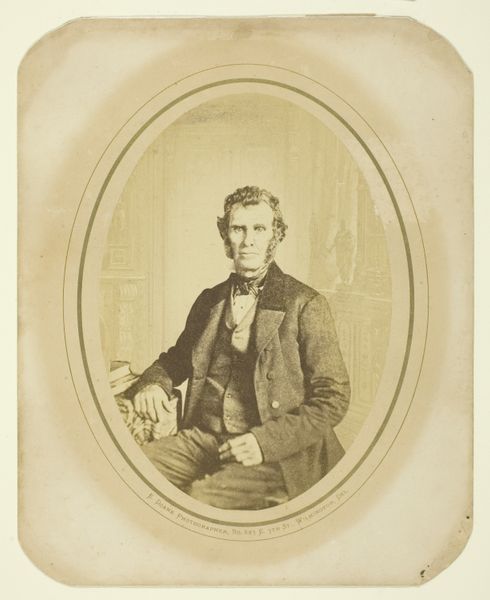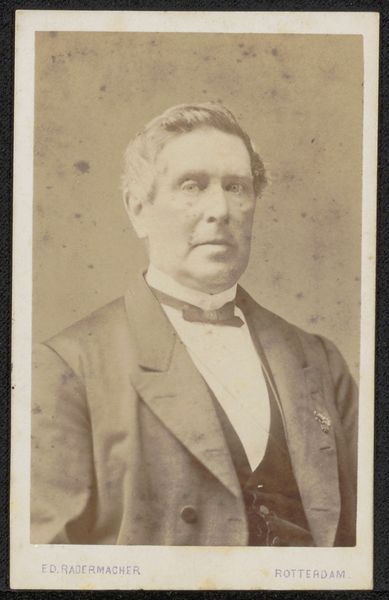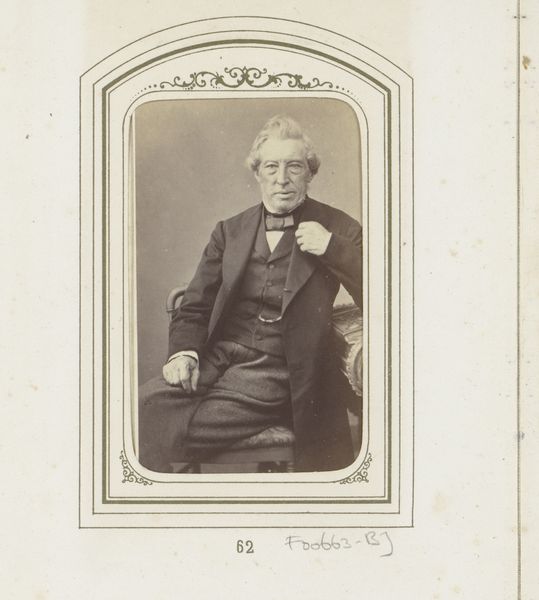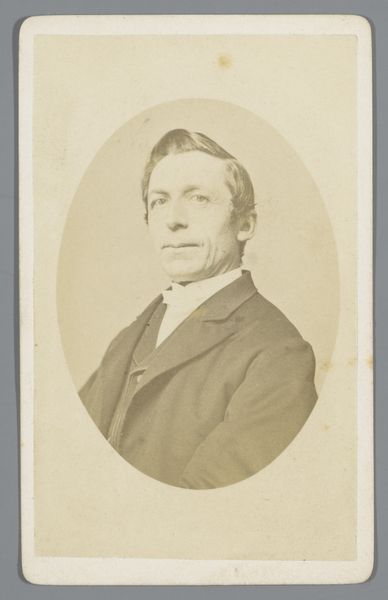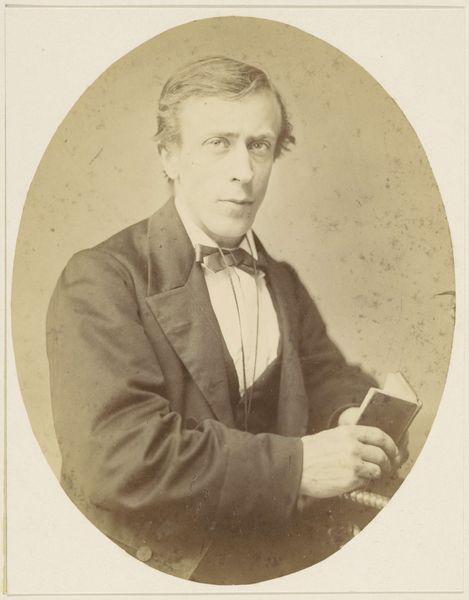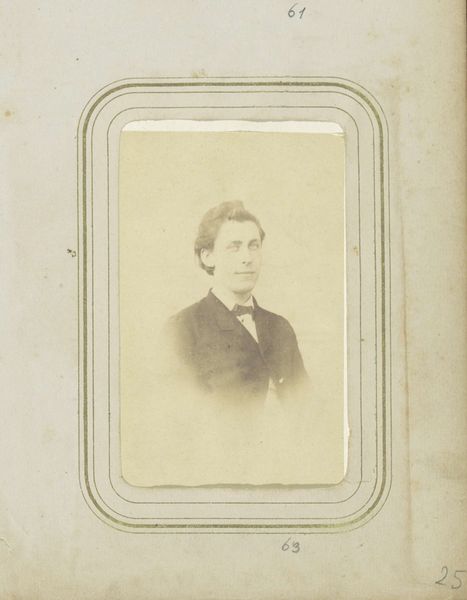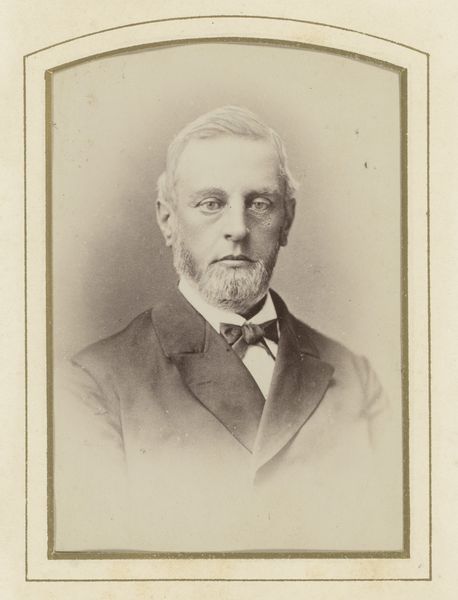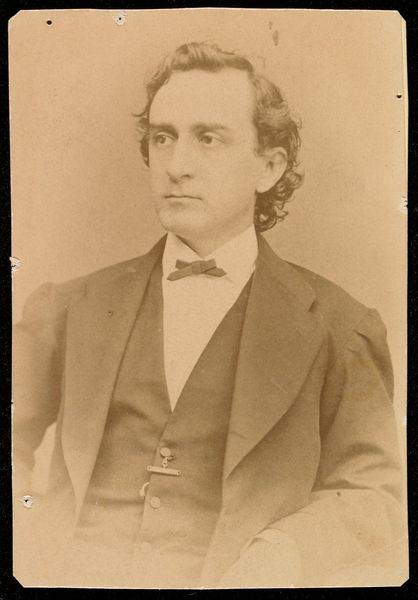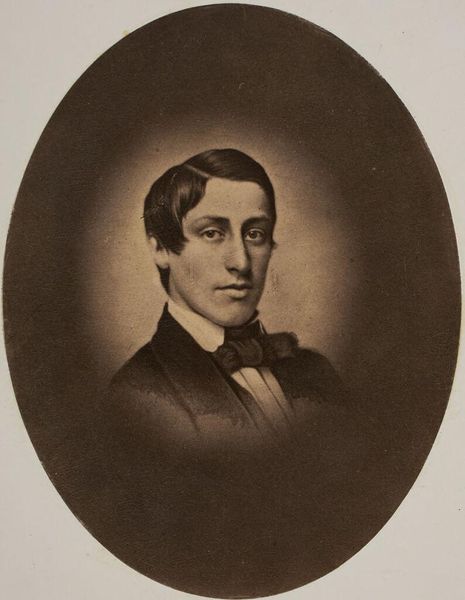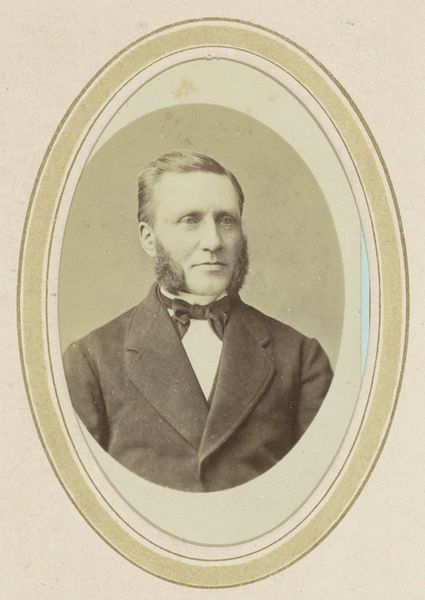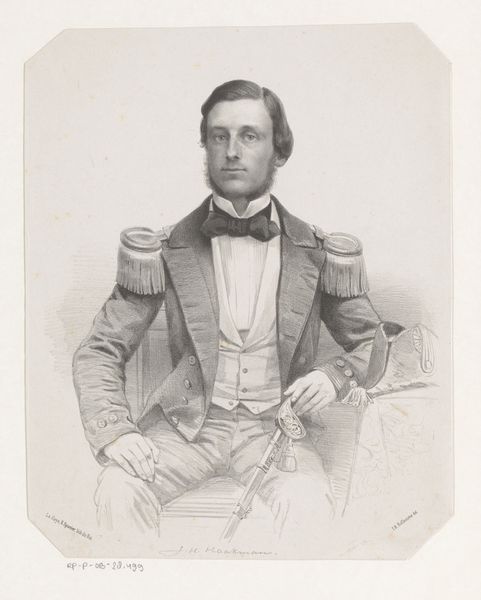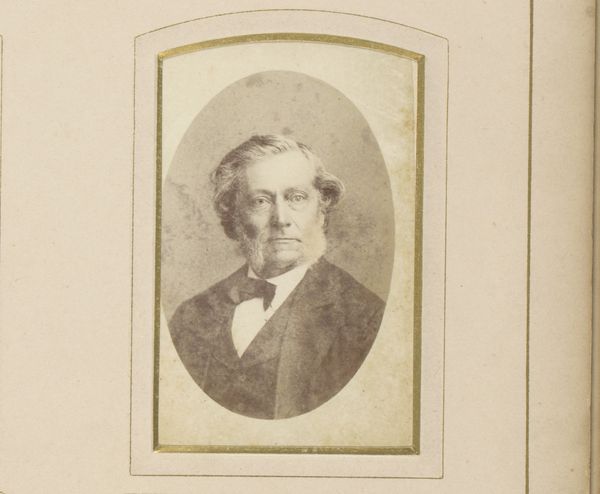
albumen-print, daguerreotype, photography, albumen-print
#
albumen-print
#
portrait
#
16_19th-century
#
daguerreotype
#
classical-realism
#
photography
#
historical photography
#
albumen-print
Dimensions: 8 1/8 x 6 1/8 in. (20.64 x 15.56 cm) (image, oval)11 5/8 x 9 5/8 in. (29.53 x 24.45 cm) (mount)
Copyright: Public Domain
Curator: This is an albumen print from around 1862, a portrait of Henry John Whitehouse, Bishop of Illinois. It's by Jeremiah Gurney, a prominent photographer of the era. Editor: There's an undeniable sense of gravitas here. The sepia tones, the oval frame... it evokes a feeling of solemn respect, doesn’t it? Curator: Absolutely. Look at the careful composition. The subtle lighting, the precise rendering of texture in his coat... Gurney masterfully employs tonal gradations to model Whitehouse’s face and clothing. Notice the clarity of the detail, characteristic of albumen printing. Editor: And consider what Whitehouse represents. A Bishop in Illinois during the Civil War era – what a position to occupy! We're talking about faith and leadership amidst national division. I can't help but think of the social pressures bearing down on him, trying to maintain unity within his religious community when the country itself was tearing apart. Curator: A pertinent point. It’s difficult to separate any portrait from its historical context, yet formalism pushes us to appreciate the intrinsic artistic elements. See how the dark suit creates a grounding effect, allowing the viewer's eye to travel up to the carefully illuminated face? Editor: Precisely. And the power dynamics inherent in portraiture itself – the sitter, the photographer, the implied viewer – these always inform how we interpret the image. Whitehouse is presenting a very specific image of himself here, one of authority, but perhaps also vulnerability if we examine his expression closely. Curator: Agreed, the emotional register is complex. I read a certain reserved dignity in the slight asymmetry of his expression and the faint lines around his eyes. Gurney captures a lived reality, not merely a flawless representation. Editor: Ultimately, this image becomes a nexus for contemplating faith, power, and personal responsibility during a tumultuous time in American history. It challenges us to consider the social narratives that define individuals. Curator: Yes, and to recognize the enduring strength and skill evident in the work’s aesthetic construction. A potent confluence, indeed.
Comments
No comments
Be the first to comment and join the conversation on the ultimate creative platform.
